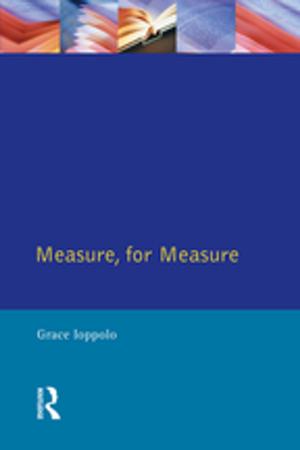Buying into the Environment
Experiences, Opportunities and Potential for Eco-procurement
Business & Finance, Economics, Sustainable Development, Business Reference, Business Ethics| Author: | ISBN: | 9781351281386 | |
| Publisher: | Taylor and Francis | Publication: | September 8, 2017 |
| Imprint: | Routledge | Language: | English |
| Author: | |
| ISBN: | 9781351281386 |
| Publisher: | Taylor and Francis |
| Publication: | September 8, 2017 |
| Imprint: | Routledge |
| Language: | English |
Green purchasing - or eco-procurement - by local and central governments has long been recommended in documents such as Agenda 21 to be a key - although sometimes supplemental-ingredient in the achievement of more environmentally responsible economies. Certainly, sustainable consumption cannot be considered a realistic goal without the full engagement of public authorities. Many initiatives have been undertaken in OECD countries, most successfully in Japan and Denmark where green public purchasing has been proven to be workable and highly effective, while, in other countries, city municipalities have successfully pioneered the development of sophisticated public environmental purchasing policies. However, for the vast majority of countries and their major cities, the potential for green public purchasing remains woefully untapped. A key question is what would be the environmental impact if the majority of cities in Europe replicated the success stories of those leading the way? Public procurement has, after all, been an important tool in achieving other public policy goals such as defence. Why should it not be used as a tool to defend the environment?
The RELIEF project, funded by the EU's "City of Tomorrow and Cultural Heritage" programme was established to answer exactly this question: to define the true potential of eco-procurement and to develop a strategy for change in Europe. Buying into the Environment is the result of the research segment of the project which has now been completed. A further stage-to design a Europe-wide action plan will follow in 2004.
The book, organised under the auspices of the International Council on Local Environmental Initiatives (ICLEI) analyses national approaches already tested, and provides in-depth surveys on the pioneer cities such as Hamburg, Malmo and Zurich. Serious attention is given to city-specific hurdles which have been faced and overcome. The most relevant product groups for eco-procurement such as construction, transport, energy, information technology, furniture and food. are also analysed.
Uniquely, the book also provides calculations on the environmental benefits potentially achievable through greener purchasing. Tools were developed and tested by the RELIEF researchers on the environmental assessment of products, public buying power and on evaluations of market conditions in order to provide scenarios for the application of green purchasing at a European level. The conclusions are that there is huge potential for both local and central governments to adapt their behaviour patterns and purchase in a more environmentally responsible way. For example, 18% of the EU's Kyoto Protocol commitment could be achieved if major cities in the European Union purchased green electricity. The results are complemented by new ideas on how best to foster innovation in public contractual arrangements-to encourage the development of products such as super-energy-efficient computers and fuel cells-and how the legal system may require adaptation and reform.
The results presented in this book will provide an indispensable resource for municipalities, governments, researchers and business practitioners looking for answers on how public procurement can have a fundamental and manifestly positive effect on the environment.
Green purchasing - or eco-procurement - by local and central governments has long been recommended in documents such as Agenda 21 to be a key - although sometimes supplemental-ingredient in the achievement of more environmentally responsible economies. Certainly, sustainable consumption cannot be considered a realistic goal without the full engagement of public authorities. Many initiatives have been undertaken in OECD countries, most successfully in Japan and Denmark where green public purchasing has been proven to be workable and highly effective, while, in other countries, city municipalities have successfully pioneered the development of sophisticated public environmental purchasing policies. However, for the vast majority of countries and their major cities, the potential for green public purchasing remains woefully untapped. A key question is what would be the environmental impact if the majority of cities in Europe replicated the success stories of those leading the way? Public procurement has, after all, been an important tool in achieving other public policy goals such as defence. Why should it not be used as a tool to defend the environment?
The RELIEF project, funded by the EU's "City of Tomorrow and Cultural Heritage" programme was established to answer exactly this question: to define the true potential of eco-procurement and to develop a strategy for change in Europe. Buying into the Environment is the result of the research segment of the project which has now been completed. A further stage-to design a Europe-wide action plan will follow in 2004.
The book, organised under the auspices of the International Council on Local Environmental Initiatives (ICLEI) analyses national approaches already tested, and provides in-depth surveys on the pioneer cities such as Hamburg, Malmo and Zurich. Serious attention is given to city-specific hurdles which have been faced and overcome. The most relevant product groups for eco-procurement such as construction, transport, energy, information technology, furniture and food. are also analysed.
Uniquely, the book also provides calculations on the environmental benefits potentially achievable through greener purchasing. Tools were developed and tested by the RELIEF researchers on the environmental assessment of products, public buying power and on evaluations of market conditions in order to provide scenarios for the application of green purchasing at a European level. The conclusions are that there is huge potential for both local and central governments to adapt their behaviour patterns and purchase in a more environmentally responsible way. For example, 18% of the EU's Kyoto Protocol commitment could be achieved if major cities in the European Union purchased green electricity. The results are complemented by new ideas on how best to foster innovation in public contractual arrangements-to encourage the development of products such as super-energy-efficient computers and fuel cells-and how the legal system may require adaptation and reform.
The results presented in this book will provide an indispensable resource for municipalities, governments, researchers and business practitioners looking for answers on how public procurement can have a fundamental and manifestly positive effect on the environment.















